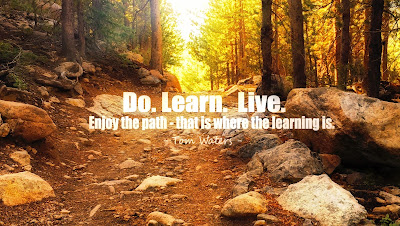Sensitive Data Tools for Informed Decision-Making
Sensitive data comes from assessments that give reliable feedback to educators about student growth. Previously, I promised to give a list of tools that can be used to shift from lethargic data to sensitive data. Here are sensitive data sources for elementary and middle-level schools that can improve your ability to make confident instructional leadership decisions.
Read about the difference in Lethargic Data and Sensitive Data Here.
The cloze works because it takes students into the reading process and requires them to make connections within a text to infer words that are missing from the text. It focuses on both students' ability to negotiate print and construct meaning.
And this research review shows how Spelling is a Predictor of Reading Comprehension all the way up to 10th grade.
Academic vocabulary should be taught...read more on that here...it should also be assessed. Not because it is the end result. It should be assessed because it will inform you on the conceptual basis for long-term academic success.
Vocabulary probes are quick assessments that use a mixture of items to assess background knowledge on three levels of complexity. Word association, matching, maze, and fill-in-the-blank are items on these probes. Administering them only takes 5-10 minutes and can be given every 3-4 weeks.
Data gathered should be used in three ways.
This is not an established practice. You won't find it in recent studies. There is significant research in support of the idea that valuable learning is learning that gets valuably organized in the mind. That's why graphic organizers are so powerful.
In this assessment tool, students organize the key ideas, concepts, and supporting facts/details in a format such as an organizer or outline. Each month they construct this organization of course information to demonstrate their global grasp of the content.
Month after month, each student's growth can be captured. When they learn new content they should be able to determine how it fits into the overall course topics. And they will.
Data will show the number of students growing each month. An eleven point scale is used (0, 10, 20...90, 100) to evaluate the assessment. 100 is the end goal. 0 is the equivalent of students not being able to do anything. Many students might score this in the first week of school. # of Ss growing in this ability.
Reliable data that is sensitive to student growth provides school leaders with reasons to celebrate. Sensitive data provides teams with the information needed to know what is really working for their students. It takes the guesswork out of the decision-making.
Try these out. Try just one. See for yourself how sensitive data can highlight the pockets of excellence in your campus.
For more on data, here are two previous posts:
Read about the difference in Lethargic Data and Sensitive Data Here.
Reading Cloze for Overall Reading Growth
This tool is old. It's been researched and used for decades. It is easy to create, quick to use, and gives solid data on student growth.The cloze works because it takes students into the reading process and requires them to make connections within a text to infer words that are missing from the text. It focuses on both students' ability to negotiate print and construct meaning.
And this research review shows how Spelling is a Predictor of Reading Comprehension all the way up to 10th grade.
Academic Vocabulary Probes
It is a key contributor to student success. Likewise, it's a priceless source of information for all content areas, including elective areas where knowledge acquisition is a worthy outcome of formal education.Academic vocabulary should be taught...read more on that here...it should also be assessed. Not because it is the end result. It should be assessed because it will inform you on the conceptual basis for long-term academic success.
Vocabulary probes are quick assessments that use a mixture of items to assess background knowledge on three levels of complexity. Word association, matching, maze, and fill-in-the-blank are items on these probes. Administering them only takes 5-10 minutes and can be given every 3-4 weeks.
Data gathered should be used in three ways.
- to identify the 10-15% of students who require additive learning opportunities.
- to identify groups of students who average score is growing (grouped by teacher, program enrollment, subject area).
- to identify instructional techniques that are producing the most growth.
Organizing Information
This tool gathers quick data on the conceptual growth of each student. It is similar to academic vocabulary probes, but it is much more challenging and cover the entire course content.This is not an established practice. You won't find it in recent studies. There is significant research in support of the idea that valuable learning is learning that gets valuably organized in the mind. That's why graphic organizers are so powerful.
In this assessment tool, students organize the key ideas, concepts, and supporting facts/details in a format such as an organizer or outline. Each month they construct this organization of course information to demonstrate their global grasp of the content.
Month after month, each student's growth can be captured. When they learn new content they should be able to determine how it fits into the overall course topics. And they will.
Data will show the number of students growing each month. An eleven point scale is used (0, 10, 20...90, 100) to evaluate the assessment. 100 is the end goal. 0 is the equivalent of students not being able to do anything. Many students might score this in the first week of school. # of Ss growing in this ability.
Data for School Leadership
This post is a bit more detailed than we normally do here on TeamTomWaters, but it's powerful for school leaders to have a vision for their data - a vision based on sensitive data.Reliable data that is sensitive to student growth provides school leaders with reasons to celebrate. Sensitive data provides teams with the information needed to know what is really working for their students. It takes the guesswork out of the decision-making.
Try these out. Try just one. See for yourself how sensitive data can highlight the pockets of excellence in your campus.
For more on data, here are two previous posts:
Measuring Student Growth with Vocabulary Part 1
Data is Not the Solution for Teachers





Comments
Post a Comment
What are your thoughts?